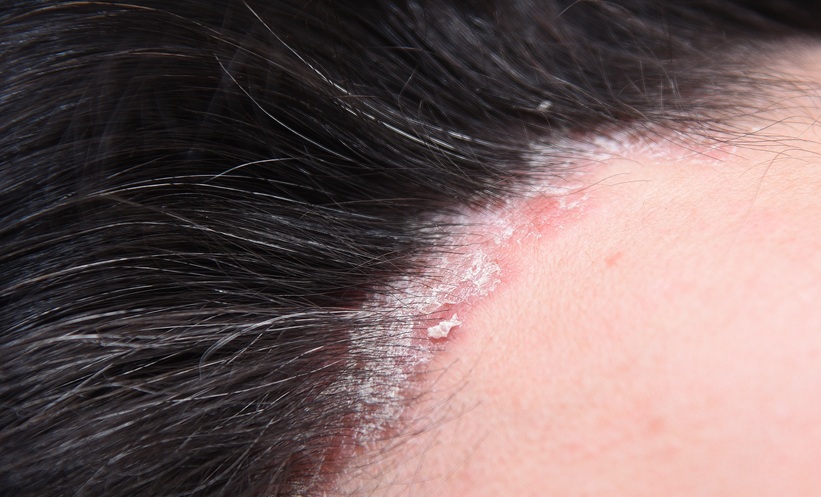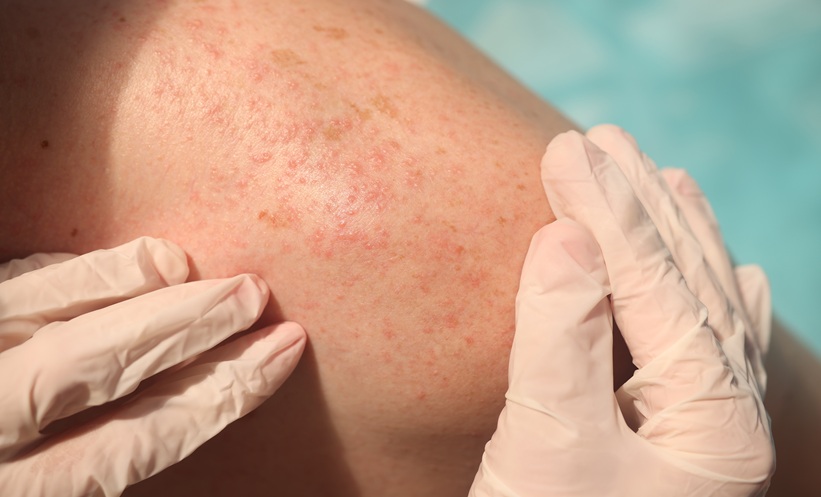Author: Noémie Fouarge, EMJ, London, UK
Citation: EMJ Dermatol. 2023;11[1]:23-25. DOI/10.33590/emjdermatol/10302905. https://doi.org/10.33590/emjdermatol/10302905.
![]()
EVALUATING ALOPECIA
Jerry Shapiro, New York University (NYU) Langone Health, USA, presented on evaluating and diagnosing scarring alopecia. Contrary to non-scarring alopecias, where hair follicles are preserved and hair loss is potentially reversible, Shapiro explained that in the case of scarring alopecia, the hair follicles are destroyed, and hair loss is most likely permanent. This is considered a trichologic emergency, and it is imperative to commence treatment as soon as possible in order to save hair follicles. To determine the appropriate course of action, Shapiro encouraged the following approach to evaluating alopecia. The first step is to obtain a thorough clinical history, including the history of hair product use, followed by observation of the scalp with the naked eye. Shapiro then recommended performing a hair pull test to assess shedding, followed by a card test to assess regrowth. Finally, the use of a dermatoscope would provide a closer look at the scalp to check for follicular ostia, erythema, hypo- or hyperpigmentation, atrophy, hyperkeratosis, or telangiectasias.
LYMPHOCYTIC ALOPECIA
Scarring alopecias are classified into three categories. The first, lymphocytic alopecia, includes frontal fibrosing alopecia (FFA). This form of disease is usually seen in older adults, and is more common in females, although it is increasingly seen in males, explained Shapiro. The onset of disease is usually gradual, and it is rarely associated with an itch, burn, or pain. Hair shedding is variable, a pull test is positive on the edges of affected areas during active phases, and the card test shows no regrowth. It is frequently associated with alopecia of the eyebrows and band-like cicatricial alopecia involving the frontal hairline. On trichoscopy, this form presents loss of follicular ostia, perifollicular hyperkeratosis, perifollicular erythema and inflammation, and pili torti.
Blume-Peytavi started by providing an overview of the management of FFA. She explained that this progressive hair loss, observed worldwide, is usually seen in post-menopausal females, but a minority of pre-menopausal females or males can be affected. It is a psychologically debilitating condition that lacks evidence for safety and efficacy of treatment; however, research around FFA is increasing. Blume-Peytavi explained that while the aetiology of FFA is unclear, a few known causes are used as pillars for therapeutic approaches. In patients with FFA, you can see characteristic perifollicular, lymphocytic inflammatory reaction around the bulge area, where stem cells are located. The destruction of these leads to scarring alopecia, as confirmed by recent research. The therapeutic approach for this is immune suppression or immune modulation, through corticosteroids, hydroxychloroquine, or calcineurin inhibitors. Blume-Peytavi further explained that immune activation is observed in FFA. It may, therefore, be possible that T helper 1-JAK-signal transducer and activator of transcription-mediated follicular damage and fibrosis result in FFA. Targeting this pathway early in the disease, with JAK inhibition, may prevent the progression of the disease. Other possible causes of FFA include genetic susceptibility, as a xenobiotic-processing enzyme genetic defect has been identified; a hormonal link; and cosmetic products and ultraviolet screens, although this is an issue of controversy.
First-line treatment for FFA consists of topical corticosteroids in an emulsion, solution, or foam; triamcinolone injections in the active rim; and a topical calcineurin inhibitor. As second-line treatment, doxycycline, hydroxychloroquine, oral corticosteroids, and finasteride may be used; and in third-line, mycophenolate mofetil, although this is associated with long-term side effects. Blume-Peytavi also suggested surgery, cosmetic camouflage, and psychologic counselling to further support patients. She stressed the importance of regular follow-up to assess the effect of treatment, using the Frontal Fibrosing Alopecia Severity Index (FFASI), serial photography, serial measurement of the frontal hairline, and trichoscopy or videotrichoscopy. She concluded that more research is urgently needed to better understand the pathogenesis of the condition, develop preventive or targeted approaches, and evaluate the efficacy of therapies.
The second form of lymphocytic alopecia introduced by Shapiro, lichen planopilaris, manifests in adults, and has a gradual onset. Variable shedding is associated with itching, pain, and burning, with a positive pull test and no regrowth on the card test. It presents with bare patches or diffuse thinning, often starting at the vertex, and is associated with perifollicular erythema and scaling. Key features of this disease on trichoscopy include loss of follicular ostia, perifollicular scaling, and pigment incontinence in patients with darker skin.
Thirdly, Shapiro introduced chronic cutaneous lupus erythematosus, which affects young or middle-aged adults, and is more common in females. The onset can be either gradual or abrupt, with variable hair shedding, as well as itching, burning, and pain. This condition leads to positive pull test for anagen hairs, and no regrowth on the card test. It manifests through well-circumscribed round or oval plaques, scaly erythematous plaques, changes within the alopecic patch, follicular plugging, telangiectasia, atrophy, and dyspigmentation. Further examination through trichoscopy shows thick arborising vessels, peripilar erythema, keratotic plugs, large yellow dots, and follicular red dots.
The final form of lymphocytic alopecia presented by Shapiro, central centrifugal cicatricial alopecia, is usually found in young adults, and is more common in females of Afro-Caribbean descent. In this case, onset is gradually progressive, with itching, burning, and pain, as well as variable hair shedding. Again, the pull test is positive for anagen hairs, and the card test shows no regrowth. Appearance of this form is symmetric, with centrifugal scarring without overt inflammation, and the scalp may be soft on palpation. Key features on trichoscopy include peripilar white or grey halo around emerging hair, white patches of follicular scarring that interrupt regular honeycomb pigmented network, and lack of follicular ostia.
NEUTROPHILIC ALOPECIA
The second category of scarring alopecia, neutrophilic alopecia, includes folliculitis decalvans and dissecting cellulitis, explained Shapiro.
Folliculitis decalvans is usually found in young or middle-aged adults, and is more common in males. It manifests through a gradually progressive onset, with itching, burning, pain, variable hair shedding, a pull test positive for anagen hairs, and no regrowth on the card test. It predominantly involves the vertex and occipital scalp, with crusting and pustule formation, as well as tufted folliculitis. On trichoscopy, this form manifests as significant polytrichia, peripilar white-yellow scale, peripilar hyperplasia, white and milky-red areas, and lack of follicular ostia.
Finally, dissecting cellulitis is most common in young adults, and likely in males of African descent. Onset of this disease is gradual, leading to variable hair shedding and pain. This type is associated with a positive pull test for anagen hairs, and no regrowth on the card test. It most commonly affects the vertex of the back of the scalp, and leads to formation of firm or fluctuant nodules, pustules, and crusting, and possibly purulent drainage from sinuses. Shapiro noted that the cysts associated with this condition can be painful, and recommended draining these in order to alleviate the pressure. On trichoscopy, you can note marked erythema, follicular pustules, and cutaneous cleft with multiple emerging hairs.
MIXED FORM ALOPECIA
The final category, mixed form alopecia, is not as common, explained Shapiro, and includes folliculitis keloidalis, folliculitis necrotica, and erosive pustular dermatosis.
CONCLUSIONS
Shapiro concluded by stressing the importance of early diagnosis and treatment of alopecia as, in some forms of scarring alopecia, such as chronic cutaneous lupus erythematosus and dissecting cellulitis, hair follicles could be saved if treated before stem cells are destroyed.







